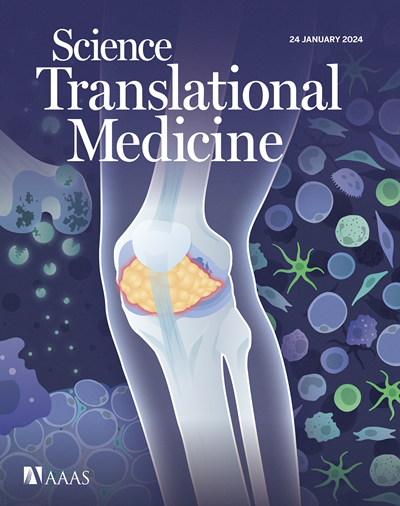The response to anti–PD-1 and anti–LAG-3 checkpoint blockade is associated with regulatory T cell reprogramming
IF 15.8
1区 医学
Q1 CELL BIOLOGY
引用次数: 0
Abstract
Immune checkpoint blockade (ICB) has revolutionized cancer treatment; however, many patients develop therapeutic resistance. We previously identified and validated a pretreatment peripheral blood biomarker, characterized by a high frequency of LAG-3+ lymphocytes, that predicts resistance in patients receiving anti–PD-1 (aPD-1) ICB. To better understand the mechanism of aPD-1 resistance, we identified murine tumor models with a high LAG-3+ lymphocyte frequency (LAG-3hi), which were resistant to aPD-1 therapy, and LAG-3lo murine tumor models that were aPD-1 sensitive, recapitulating the predictive biomarker we previously described in patients. LAG-3hi tumor-bearing mice were sensitive to aPD-1 + anti–LAG-3 (aLAG-3) therapy, and this benefit was CD8+ T cell dependent. The efficacy of combination therapy was enhanced in LAG-3hi (but not LAG-3lo) mice with depletion of CD4+ T cells. Furthermore, responses to aPD-1 + aLAG-3 correlated with regulatory T cell (Treg) phenotypic plasticity in LAG-3hi mice, suggesting a specific role for Tregs in response to aPD-1 + aLAG-3 treatment. Using Treg fate–tracking Foxp3GFP-Cre-ERT2 × ROSAYFP reporter mice, we demonstrated that expanded populations of unstable Tregs correlated with improved response to combination therapy in LAG-3hi mice. Complementing these preclinical data, an increased proportion of unstable Tregs also correlated with higher response rate and improved survival after aPD-1 + aLAG-3 therapy in a cohort of patients with metastatic melanoma (n = 117). These data indicate that Treg phenotypic plasticity affects aPD-1 + aLAG-3 responsiveness, which may represent a biomarker to aid patient selection and a rational therapeutic target for a subset of PD-1–refractory patients.
求助全文
约1分钟内获得全文
求助全文
来源期刊

Science Translational Medicine
CELL BIOLOGY-MEDICINE, RESEARCH & EXPERIMENTAL
CiteScore
26.70
自引率
1.20%
发文量
309
审稿时长
1.7 months
期刊介绍:
Science Translational Medicine is an online journal that focuses on publishing research at the intersection of science, engineering, and medicine. The goal of the journal is to promote human health by providing a platform for researchers from various disciplines to communicate their latest advancements in biomedical, translational, and clinical research.
The journal aims to address the slow translation of scientific knowledge into effective treatments and health measures. It publishes articles that fill the knowledge gaps between preclinical research and medical applications, with a focus on accelerating the translation of knowledge into new ways of preventing, diagnosing, and treating human diseases.
The scope of Science Translational Medicine includes various areas such as cardiovascular disease, immunology/vaccines, metabolism/diabetes/obesity, neuroscience/neurology/psychiatry, cancer, infectious diseases, policy, behavior, bioengineering, chemical genomics/drug discovery, imaging, applied physical sciences, medical nanotechnology, drug delivery, biomarkers, gene therapy/regenerative medicine, toxicology and pharmacokinetics, data mining, cell culture, animal and human studies, medical informatics, and other interdisciplinary approaches to medicine.
The target audience of the journal includes researchers and management in academia, government, and the biotechnology and pharmaceutical industries. It is also relevant to physician scientists, regulators, policy makers, investors, business developers, and funding agencies.
 求助内容:
求助内容: 应助结果提醒方式:
应助结果提醒方式:


